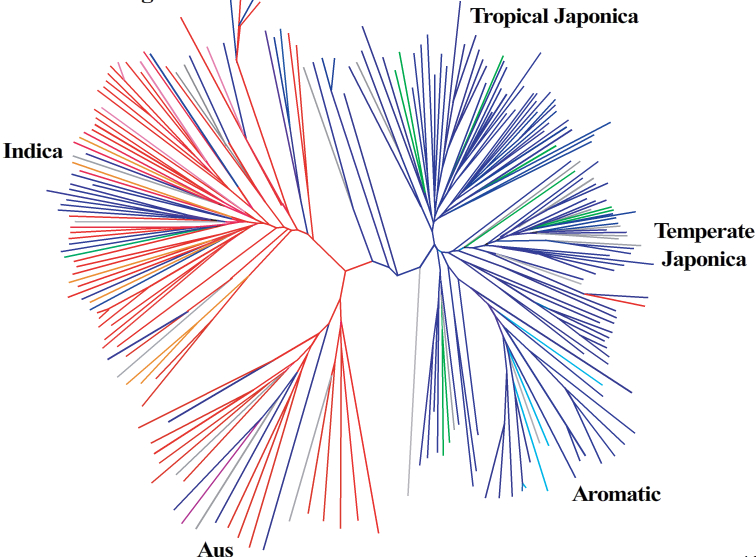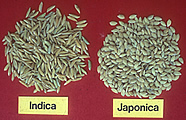Populations of Rice

Rice, Oryza sativa, is a cultivated, inbreeding species that was domesticated in Asia from a complex ancestral species, O. rufipogon (36; 48). Evidence from fossilized remains of rice grains found in tombs in China, India, and Vietnam suggest that rice cultivation began approximately 10,000 years ago (28; 53; 14; 17; 38), though archaeological and genetic evidence suggest that rice domestication may be a more recent phenomenon.

Two major varietal groups within O. sativa, indica and japonica, have been recognized since ancient times by many different ethnic groups (28; 36). Estimates of sequence divergence and transposon insertion polymorphism between indica and japonica suggest that these groups last shared a common ancestor more than 100,000 years ago (26; 4; 49; 15). This time estimate underscores the hypothesis that the indica-japonica differentiation pre-dates the domestication of O. sativa and is consistent with the idea that the two varietal groups were domesticated from a pre-differentiated ancestral pool (4; 11; 15; 24; 39; 41; 42).
Five sub-populations have been clearly identified within O. sativa using SSR and SNP markers (3; 11). Of these, the indica and aus sub-populations cluster within the indica varietal group, and the tropical japonica, temperate japonica and aromatic (basmati) sub-populations cluster with the japonica group (11). This sub-population structure is deep, with overall estimates of divergence showing Fst (genetic differentiation) values of 0.375 (11), compared to Fst values of 0.08-0.09 for heterotic groups in maize (29).
